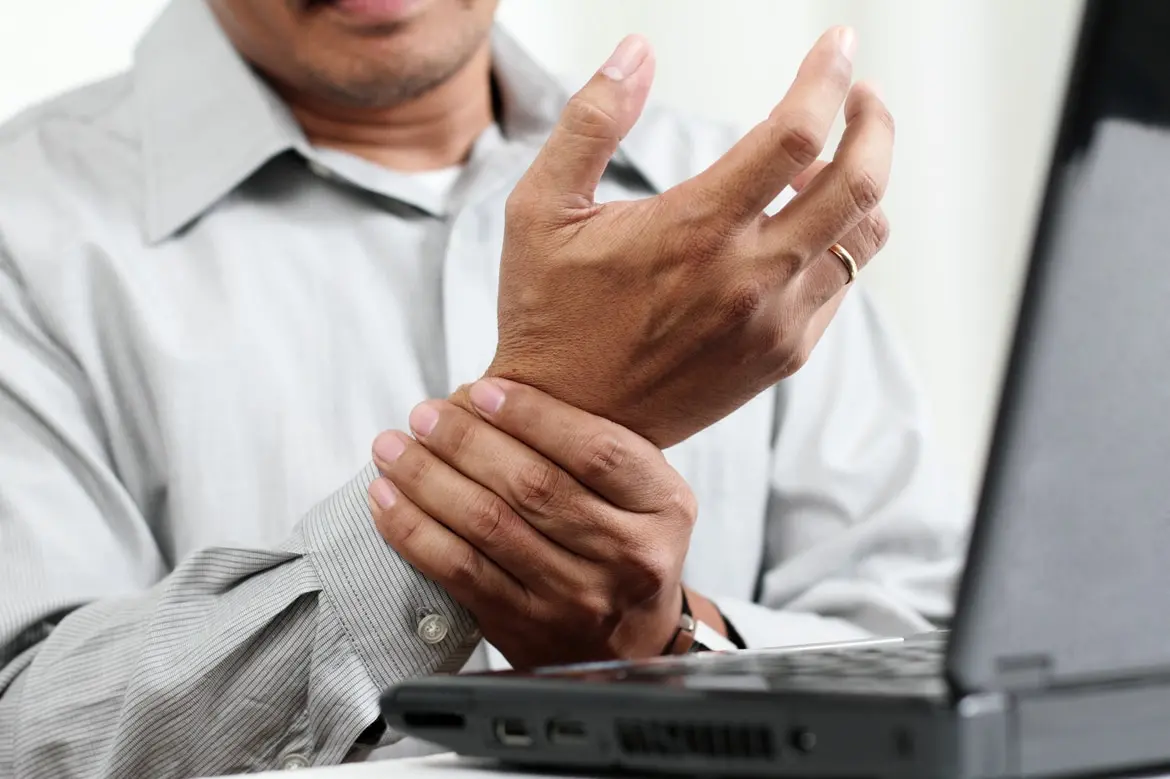Dr Lee Yi-Liang Jonathan
Hand Surgeon


Source: Shutterstock
Hand Surgeon
De Quervain's syndrome, or de Quervain's tenosynovitis, is an inflammation of the tendons that join your thumb and wrist. Pain in the thumb side of the wrist is the primary symptom, as this is where the tendons pass through a constrictive tunnel known in medical terms as the first dorsal extensor compartment.
With de Quervain's syndrome, you may experience pain during activities that require the use of your thumb or wrist, such as lifting your baby, holding a tray, turning door knobs, pinching something or turning keys.
The main symptoms of de Quervain's syndrome are sudden or gradual pain:
If you're concerned you may have this condition, speak to an orthopaedic hand specialist.
Often, patients with de Quervain's have a classic history of work-related overuse, or experience increasing pain while nursing a newborn in the first few months after delivery. To diagnose de Quervain's syndrome, your doctor may conduct a Finklestein's test, or order an X-ray or blood test to confirm the condition.
To diagnose the condition, your doctor will first perform a Finklestein's test, where you grip your thumb in your palm and turn your wrist in the direction of your little finger, to determine where the pain is located. They will also check for tenderness or an inflammatory nodule or lump.
Occasionally, your doctor may perform X-rays and blood tests to rule out other causes of joint pain in the thumb region, such as osteoarthritis, which may present with similar symptoms.
Anyone can develop de Quervain's syndrome, but certain people are more at risk. Women are more likely to suffer from de Quervain's syndrome, and it is also more common in people aged 40 and above. Other common causes of de Quervain's syndrome include:
Hormonal changes during pregnancy can cause sore or inflamed tendons. In addition, young mothers who are busy with childcare tasks often experience what's commonly known as 'mummy’s thumb' or 'mummy's wrist', which can cause pain in the hand and forearm. 'Mummy's thumb' occurs due to the constant responsibilities of motherhood such as carrying the baby, nursing, and constantly lifting their baby throughout the day.
You may also develop de Quervain's if your job requires repetitive lifting using your wrists, such as a waiter carrying trays all day, or a construction worker using certain kinds of tools.
Past wrist injuries may also be a factor as scar tissues can restrict movement in your tendons, as well as inflammation caused by arthritis.
Treatment options for de Quervain's are aimed at reducing pain and inflammation, while helping to maintain movement in your thumb and wrist.
If left untreated, de Quervain's may cause pain and swelling to get progressively worse, resulting in stiffness around the thumb and wrist. This can cause significant disability and affect the performance of everyday tasks.
Early measures can help to relieve symptoms and prevent the need for more serious intervention. These steps are similar to those used to help prevent de Quervain's from developing, such as taking regular breaks when using your hands and wrists, or switching activities to prevent overuse. You should also avoid those activities which always result in wrist pain.
Your doctor will treat the condition with a specific kind of brace or splint to immobilise the thumb and rest the inflamed tendons, helping to prevent further aggravation. A short course of oral anti-inflammatory medications may also help.
A wrist splint or brace, to limit thumb and wrist motion, may allow the tendons to rest, and an ice bag can help reduce swelling.
A physiotherapist can advise you on exercises to help strengthen muscles and relieve symptoms, and recommend ways to perform certain activities without triggering more pain. These exercises must be performed regularly, as directed, for symptoms to improve.
Anti-inflammatory pain relievers can help to reduce pain and swelling. As an alternative to oral medication, your doctor may recommend a corticosteroid injection into the tendon sheath to reduce the swelling.
Surgery may be needed if symptoms are severe or if other treatment options are ineffective. The procedure will open the sheath surrounding the tendons to relieve pressure and allow your tendons to move more freely.
De Quervain's surgery is normally performed as a day surgery procedure, with the healing process taking up to 2 weeks. This usually results in very rapid if not immediate relief of the pain and stiffness. Many individuals will begin to use their hands for simple daily activities immediately after surgery, but heavier lifting tasks may take longer and should not be attempted until you feel comfortable.
You will normally be given a splint in the immediate post-operative period for your comfort.
With this surgery, it is unlikely your de Quervain's will return.
De Quervain's syndrome can be prevented by by changing the activities that cause pain. These include:
If you have concerns about your hand and wrist pains, don't be afraid to speak to an orthopaedic hand specialist.